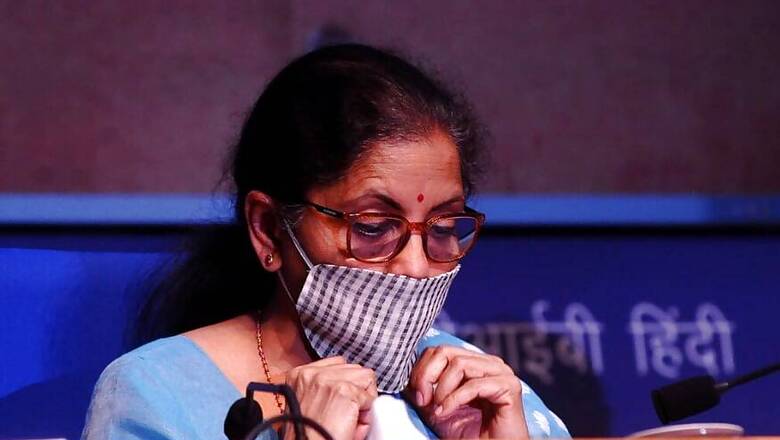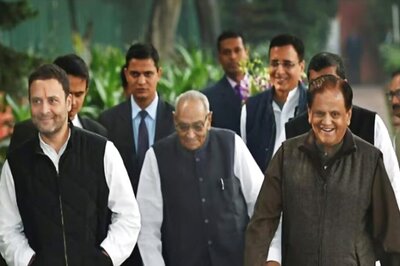
views
The signs have been there all along. The government has been slowly trying to offer a wider role to the private sector in many areas which were, till now, believed to be the sole domain of public sector enterprises (PSEs). Take coal mining, where the government has finished the historical monopoly of Coal India. Or smaller airports, which have seen rapid passenger growth but have been unable to take advantage of this due to parent Airports Authority of India (AAI) and its constraints. They are now being offered to private operators, with terms which are different from the conditions under which the large ones like Delhi and Mumbai operate.
Even train travel, which has always been seen as a public service with subsidized fares, but is now beginning to witness “privatization’. The Indian Railways plans to offer some trains to private parties and this would mean only limited fare concession options may be available to passengers.
Does increasing role of private parties necessarily bring in efficiencies of scale, does it improve service standards as a thumb rule and will it be a panacea for the economic crisis engulfing India as the Covid19 pandemic rages on? Also, how successful has this government been in its first term in achieving disinvestment targets and will it be comparatively keener to pursue the targets now onwards?
These were some of the questions which came to mind as Finance Minister Nirmala Sitharaman announced this morning that the government would be coming out with a Public Sector Enterprises policy. Later, a statement said this policy will include a list of “strategic” sectors requiring presence of PSEs in public interest. In strategic sectors, at least one enterprise will remain in the public sector but private sector will also be allowed. In other sectors, PSEs will be privatised.
Also, the number of enterprises in strategic sectors will be capped at four and others will be privatised/ merged/ brought under holding companies. So in effect, what the government has outlined today is intent to allow private participation in all sectors.
Privatisation or opening up a sector to private participation has not always lead to bountiful gains. Take the case of telecom and aviation sectors, where the public companies - Air India and BSNL/MTNL - gradually ceded control as multiple private operators entered and prospered over the years. Of course, service standards and the bouquet of services on offer improved, country wide penetration of airline and telecom services also improved vastly because of private enterprise. And the public sector enterprises in both these sectors went from being profitable market leaders to massive loss makers, operating at the margins of the industry.
But today, both telecom and civil aviation sectors are in deep financial trouble (even before Covid hit airline operations) due to skewed tariff policies and some historic baggage. And the abundance of private operators has done little for the viability of either sector. Not just the public sector companies in each, now even some private operators are seeking government concessions.
Not surprisingly, the Opposition criticized the government’s move to restrict the role of public sector almost immediately after the FM’s announcements, with CPI(M) and the Congress calling into question the government’s motives.
CPIM’s Sitaram Yechury tweeted: “More avenues for loot to his Cronies, foreign & domestic corporates is Modi and his govt’s best Covid cure! What has whittling down the public sector, even in “notified strategic areas”, got to do with the Covid crisis? (sic)”
And Congress’ Jairam Ramesh said: “The public sector built India. It made India strong and self-reliant. Now in the name of 'Atmanirbhar Bharat', Modi-style, the public sector is being taken to the shamshaan ghat”.
The public sector may have lost much of its relevance in public discourse over the years but it continues to have a sizeable presence. As per the Public Sector Enterprises Survey 2018-19, 249 central PSEs were operational till March 2019 in five broad sectors. These CPSEs employed over 15 lakh people and paid the government a neat Rs 3.69 lakh crore in various levies in 2018-19. What’s even more surprising is that this amount was higher by nearly Rs 1010 crore compared to the payment in the immediately previous fiscal – so government earnings from CPSEs increased.
This survey noted that CPSEs are “key and strategic actors in the nation’s economy: and hold dominant market share in sectors such as Petroleum, Crude Oil, Coal, Power, Steel and Mining.”
Of course, they were also simultaneously and increasingly under competitive pressure. A large number of CPSEs were set up as greenfield projects but some, such as the National Textile Corporation, British India Corporation, Andrew Yule & Company, Coal India etc. came up after private companies were nationalized. And some like Hindustan Zinc, Maruti Udyog, Balco etc. were privatized when private players took over their operations.
Still, many PSE stalwarts remain market leaders. SBI is India’s largest bank; LIC remains the market leader in life insurance; Coal India is the world’s largest coal company and so on. The Indian Railways transports nearly 23 million people every single day across its vast network, among the largest anywhere in the world. So PSEs may have not lost all relevance.
D K Srivastava, Chief Policy Advisor at EY, said that a policy on PSEs should be finalized in consultation with states since there were a large number of state level PSEs.
“The choice of sectors earmarked as PSEs would depend on their strategic importance….The policy of limiting the number of PSEs in one sector to a maximum of four may prove to be an uphill task since at present, there are many sectors where the number of CPSEs is quite large. There are 43 CPSEs in technical consultancy services, 36 in heavy and medium engineering sector and 23 in transport and logistics. Other than defence, space and nuclear energy, there may not be any need to continue to have a PSE. But, it is best to let this policy of exiting from PSEs evolve at a gradual pace.”
The view that government should exit all except limited number of sectors considered strategic is fine, as long as the exit strategy also makes economic sense. Besides, the handing over to the private sector has not always lead to improvement in parameters. Also, there is the matter of the lakhs employed by PSEs and what to do with such a large workforce, especially after the Covid19 induced unemployment.
Assertions of lessening dependence on PSEs notwithstanding, the government has had limited success at best on the disinvestment front. For 2020-21, the target is an ambitious Rs 2.1 lakh crore, a three-fold increase over the revised estimates for 2019-20 at Rs 65,000 crore. This was against Budget Estimates of 2019-20 of Rs 1.05 lakh crore. The big ticket deals, such as Air India and BPCL disinvestments, anyway appear to be stuck now due to the pandemic and the devastating effect it has had on business sentiment. The government has already gone back on its own assertion of privatizing the loss makers BSNL and MTNL.



















Comments
0 comment